The Very Hungry Caterpillar
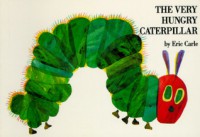
The Very Hungry Caterpillar is a fun story that can be read from Pre-K through 1st grade. It is about a caterpillar who eats a lot of different food items each day, and displays the life cycle of a caterpillar.
You can do a sequencing activity with this story, determining what the caterpillar ate each day, or you can do a science activity about the life cycle of a caterpillar. You can give the students a picture of a caterpillar with Monday - Sunday written in each part of the caterpillar's body, and the students can either write or draw what the caterpillar ate each day.
The Lion, the Witch, and the Wardrobe

The Lion, the Witch, and the Wardrobe is an incredible novel by C.S. Lewis. I read this book in 5th grade with my class. It is about four children who make their way to a far away land called Narnia; there they become prisoners to an evil witch who calls herself the Queen of Narnia; huge sacrifices are made and war is brought up between the four children and the witch.
This story can be read in a 5th grade classroom; I would use this to have discussions on sacrifice, character analysis, and theme during the reading. You could also use this to do a compare and contrast between the four siblings, and describe the relationship between the four and how they work together. You can also have the students write about what it means to be a hero and what makes Aslan a hero.
Mind Your Manners, B.B. Wolf
![Mind Your Manners B.B. Wolf[MIND YOUR MANNERS BB WOLF][Hardcover] - JudySierra](http://booklikes.com/photo/max/200/300/upload/books/c/7/c71e2fe4a10673f1aba14a14b479cfe0.jpg)
Mind Your Manners, B.B. Wolf is an interesting, funny story about a wolf named B.B. Wolf who gets invited to a tea by a librarian; his friend gives him advice on how to mind his manners at the tea, telling him to smile and to not bite anyone. This story has other fictional characters such as Little Red Riding Hood and the Three Little Pigs, who B.B. tries his best to make a great impression on.
I loved reading this story. Children would really enjoy it because it is funny, has good advice on manners, and has other characters they are already familiar with. This book would be great to read in a first grade classroom with a number of other books about a "big bad wolf", having the students compare and contrast the wolves and other characters in the stories. They can also have a creative writing activity where they write a story about a "big bad wolf".
If You Give a Moose a Muffin

If You Give a Moose a Muffin is a fun story about a moose that is given a muffin, then wanting jam to go with it, then he'll want to go to the store to get more muffin mix. I read this story along with If You Give a Mouse a Cookie when I was a child, and I enjoyed both of these stories.
This book would be great to use in a kindergarten or first grade classroom. You could either do a lesson on cause and effect, or sequencing. For cause and effect, you can together make a cause and effect anchor chart and determine which events in the stories are caused or affected by which. You could also make a sequencing anchor chart and have the students put the events in order.
Bud, Not Buddy

Bud, Not Buddy is about a young boy who is sent to an orphanage at the age of six after his mother passes away. This story is taken place during the Great Depression. Bud is determined to find his biological father while he is moving from the orphanage to different families. I read this story a couple of years ago and thought it was fantastic.
This novel could be read in a 3-5th grade classroom aloud, or it could be read in 6-8th grade. I would use this story to have comprehension, analysis and theme discussions as reading it aloud in the class. I would have 5th grade students choose one object or person from the story that is a symbolic representation and have them write about it. For 3rd or 4th graders, I would have them choose one of the main characters and create a word web describing that character.
A Mink, a Fink, a Skating Rink

A Mink, a Fink, a Skating Rink: What is a Noun? is another fun story by Brian Cleary. It is to be read with a lot of enthusiasm, because this story gives students an exciting route to learning parts of speech.
This book's reading level ranges from K-2; I would read this story aloud in a 1st grade classroom and as I am reading, I would have my students either hold their thumbs up each time they hear a person, place or thing, or write down a few nouns they heard throughout the story and repeat them after reading. Then I would give them a list of nouns and have them decide if each is a person, place or thing. An extension would be to have them to a creative writing activity, giving them a number of nouns to have in a story they create.
Bridge to Terabithia

Bridge to Terabithia is about a boy and a girl, Jesse and Leslie who become best friends and together create wild kingdom. Jesse and Leslie have very different interests, but the two stick together like glue through everything, even when faced by a bully. This novel portrays relatable characteristics of friendship, and a father-son relationship through Jesse and his father.
I would read this novel in a fifth grade class room (Reading Level 4.6) and have my students describe each of the main characters and how they are different, and tell how the characters "cross the bridge", finding similarities between the characters and how they work together.
The Book With No Pictures

The Book With No Pictures is a fun, expressive story (with no pictures, of course). The point of this book is the tone in which it is read. B.J. Novak, the author, reads this story to young children with such enthusiasm and they are completely in awe and entertained.
I would read this story with kindergartners, first or second graders. It would be really awesome to have Novak read it to the whole school, but assuming this would not be easy to do, I would read this story to my class; then, during stations, in the reading center, I would have this book out for students to practice fluency and enthusiasm by reading this story to each other. I would even use this book as a reward for my students to go and read to another class.
There was an Old Lady who Swallowed a Fly

There was an Old Lady who Swallowed a Fly was one of my favorite books to read in Elementary School. It is such a fun book, and I love that there is a song you can use to follow along with. There are so many fun activities that you can use this book for.
I would use this book in kindergarten or first grade, and one thing you can do that I did in a class is cut out small pictures of each animal in the story, separating your students into groups for an activity. You can also use a paper plate to make an old lady, the plate being her stomach, and cut out pictures of each animal that she eats and gluing it to the plate; you can have your students color it and hang it up.
Another thing you can do is an sequencing activity sheet, cutting out the animals and gluing them to a paper in the order they were eaten.
The Rainbow Fish
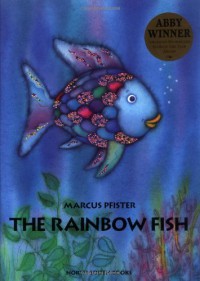
The Rainbow Fish is a story about a fish that is too proud of his beautiful, shiny scales to play with other fish. A blue fish comes along and asks for one of his scales, and the rainbow fish gets angry and says no. He starts to wonder why others are treating him so rudely, and eventually he comes to a perfect solution by sharing his scales.
This is a great story to do in first or second grade; you can do an activity for labeling the parts of a fish, and coloring the scales. You can also do this in kindergarten and discuss why it is important to share.
Where the Wild Things Are

Where the Wild Things Are is about a young boy who gets into trouble and is sent to bed without dinner. His creative imaginative mind takes him to a land of wild creatures where he becomes their king. This is a great story that children can relate to because of their imagination.
You could use this in a first or second grade classroom and have an anchor chart with character, setting, problem and solution sections for the students to fill out. You could also do a text-to-self activity sheet for the students to do that has at the stop "If I Were a Wild Thing, I Would Look Like This...", then at the bottom "A wild thing I would do: ________"
The Pout Pout Fish
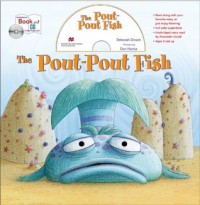
The Pout Pout Fish is a really cute book about a fish that thinks he has a "pouty" face because that is how he has also perceived himself. After claiming himself as a pout pout fish for so long, a new friend comes along and shows him a whole different view of himself - a much brighter, happier view.
You could use this story in a kindergarten, first or second grade classroom and have students construct a "pout pout" fish, and have a creative writing sheet that says "I am a pout pout fish when..." that they would complete. You could also do a graphic organizer that has a "kiss kiss" fish and a "pout pout" face, and under each picture would have "I feel cheery/pouty when..."
Bully B.E.A.N.S.
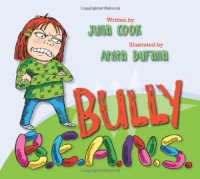
Bully B.E.A.N.S. is a fantastic story about children who stand up to a new bully, Bobbette. They eventually tell their parents and teachers about the bullying, and we learn that Bobbette was bullied at her old school.
This story is perfect to read in 1st-5th grade, since bullying is an issue in just about every grade. Students can be given a pack of "bully beans" (jelly beans) and if they are bullied, they can eat one and write about it in a journal or on a note card and give it to their teacher or counselor. For the older grades, 4th and 5th, you can even have your class act out a bullying scene in groups and have the rest of the class, the audience, decide what needs to happen or answer questions throughout the group's skit.
The True Story of the Three Little Pigs
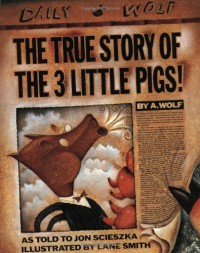
The True Story of the Three Little Pigs is the story of the three little pigs seen from the wolf's perspective. I read this about a year ago and I like that there is a different version of a classic story written in a different point of view by having the wolf tell his side of the story.
I would use this story in a first or second grade classroom, discussion perspective and points of view. I would have an anchor chart on display and together we would compare and contrast the wolf's perspective and the pigs' perspective.
Harriet the Spy

Harriet the Spy is about a girl who writes down everything she notices or feels about everyone, including those she calls her friends. This is a fantastic book that many students can relate to - whether they have felt isolated, bullied, or have been a bully. Students can learn from Harriet the Spy how be honest but gracious and nice.
With this novel, I would read it aloud as well as assign chapters to read for students in any grade between third or fifth grade. We would throughout the readings have class discussions on character, setting, plot and analysis, as well as have short quizzes when assigned chapters to read to test reading. In a fifth grade class, I would at the end of the reading have my students write an essay discussing when it is okay to write about people and why.
Charlotte's Web

Charlotte's Web is a fantastic novel; I have read this two or three times. A little girl named Fern puts forth all her efforts to save and take care of a pig named that her dad just wants gone. The novel includes a spider named Charlotte who is a very motherly and encouraging friend to Wilbur. This story teaches students about true friendship and devotion to one another.
For this novel, I would read it in a fourth or fifth grade classroom, and have my students throughout our reading make notes about the characters, then at the end of our reading I would have them either fill out a graphic organizer with the plot (beginning, climax, and ending) or have discussion questions in groups about the theme, plot, characters, etc.



